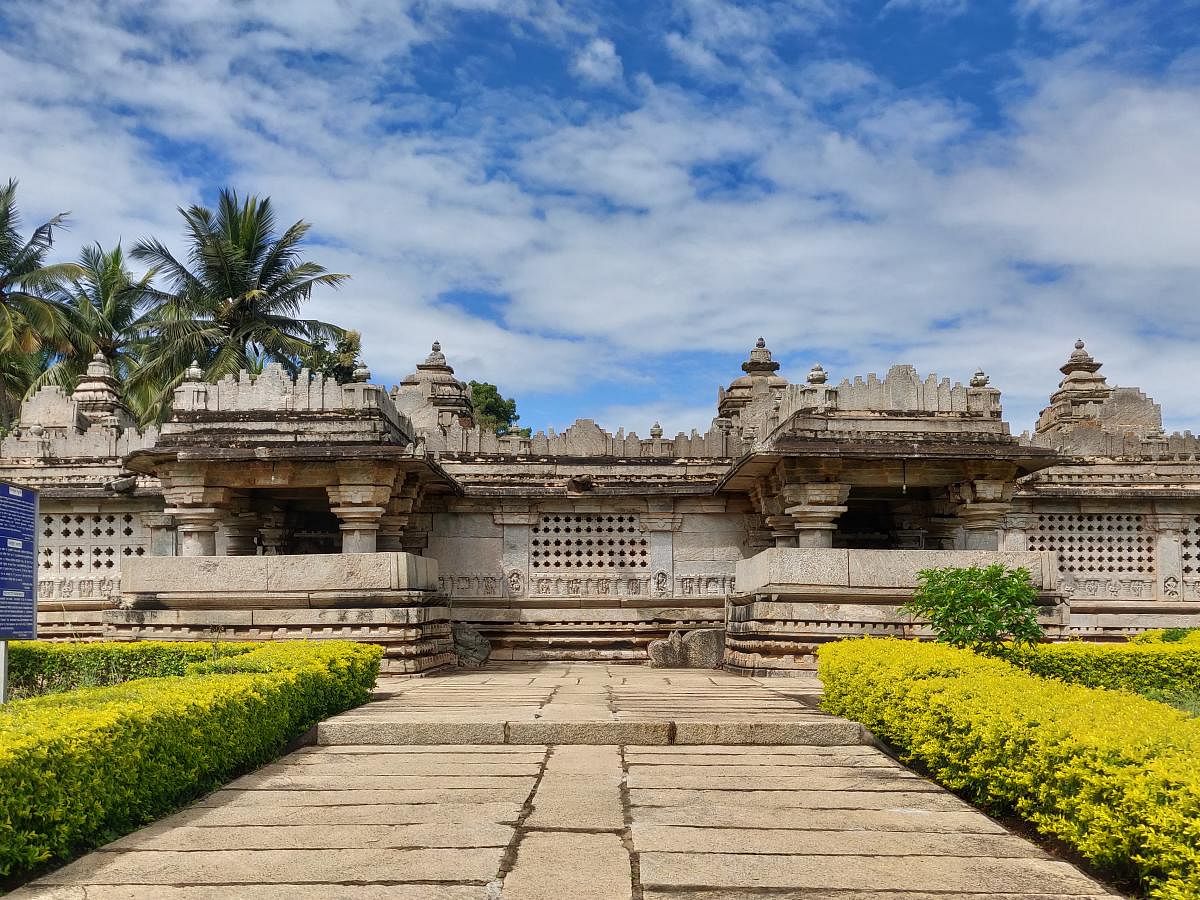

The Hoysala kings promoted art, culture and religion in a big way during their reign in South India. As patrons of architecture, they built elaborate temples across Karnataka.
While the Hoysala temples are synonymous with the phenomenal monuments of Belur, Halebidu and Somanathapura, there are several gems that are off the regular tourist circuit...
Panchalingeshwara Temple, Govindanahalli
Meaning 'Five Lingas', this temple, about 20 km from Channarayapatna, was built in the 13th century during the reign of Hoysala king Vira Someshwara. A fine example of the uncommon panchakuta, the temple complex consists of five shrines and five towers with all the garbha grihas (sanctum sanctorum) facing east.
The inner complex is replete with elaborate pillars and each sanctum is preceded by a vestibule (sukanasi). The temple having a quintuple plan, has two entry doorways opposite the second and the third garbha griha.
The main deity is Lord Shiva, in the form of a linga, and they have been named Ishanyeshwara, Tatpurusheshwara, Aghoreshwara, Vamadeveshwara and Sadyojateshwara. There is a statue of the holy bull (Nandi) in front of each shrine and each one is uniquely carved.
The outer walls depict through intricate carvings scenes from the Dashavatara, an intrigue as the main deity here is Lord Shiva. The famous Hoysala sculptor, Ruvari Mallitamma is said to have made significant contributions to this temple including carving the two elaborate Dvarapalas.
Brahmeshvara Temple, Kikkeri
Yet another fine example of Hoysala architecture about 10 kilometres from the world-famous shrine at Shravanabelagola, this temple dates to 1171 AD and is said to have been built by a rich lady, Bommare Nayakiti, during the reign of Hoysala ruler Narasimha.
The style and architectural features of this ekakuta (single shrine) temple indicate that it was built before the Hoysala temple architectural heritage peaked. The temple was set at ground level, and not built on a raised pedestal, a feature of the Hoysala temples built later on.
The façade bears carvings of popular Indian deities like Ganesha, Lakshmi, Parvathy — all of which are housed within individual gopuras that have been built in Dravida and Kalinga styles. The lower tiers have larger carvings of lions, elephants and dancing deities and are relatively plain.
A compelling feature of the temple is the ornately carved Nandi at the entrance. Entering inside the Navaranga Mantapa, the sight of four massive carved pillars is striking, as is the ceiling that bears elaborate geometric carvings. Each pillar has the sculpture of Mandakini or the dancing lady, a characteristic of Hoysala temples.
Lakshminarayana Temple, Hosaholalu
A seemingly sleepy village in Mandya district that houses beautiful courtyard houses, Hosaholalu, about 45 km from Mysuru, is home to a grand specimen of Hoysala architecture, the Lakshminarayana Temple.
Built on a jagati (elevated platform), this temple with three shrines (trikuta vimana) was built by Hoysala King Vira Someshwara in 1250 AD. It's dedicated to Lord Vishnu, who is found in three forms — Venugopala, Lakshminarayana and Lakshminarasimha.
The inner chamber of the temple has stunning lathe pillars as well as a magnificent roof bearing geometric designs that speak volumes about the talents of yesteryear.
The symmetry in the pillars is sure to leave you awe-struck, for, as you run your fingers through the space in between the protrusions of the pillars, you are sure to come down in a perfectly straight line!
The outer walls, too, display a superior level of workmanship with Vishnu's avatars sculpted. Scenes from the Ramayana and the Mahabharata are depicted, apart from the friezes that host depictions of birds, horses, elephants and even aquatic monsters.